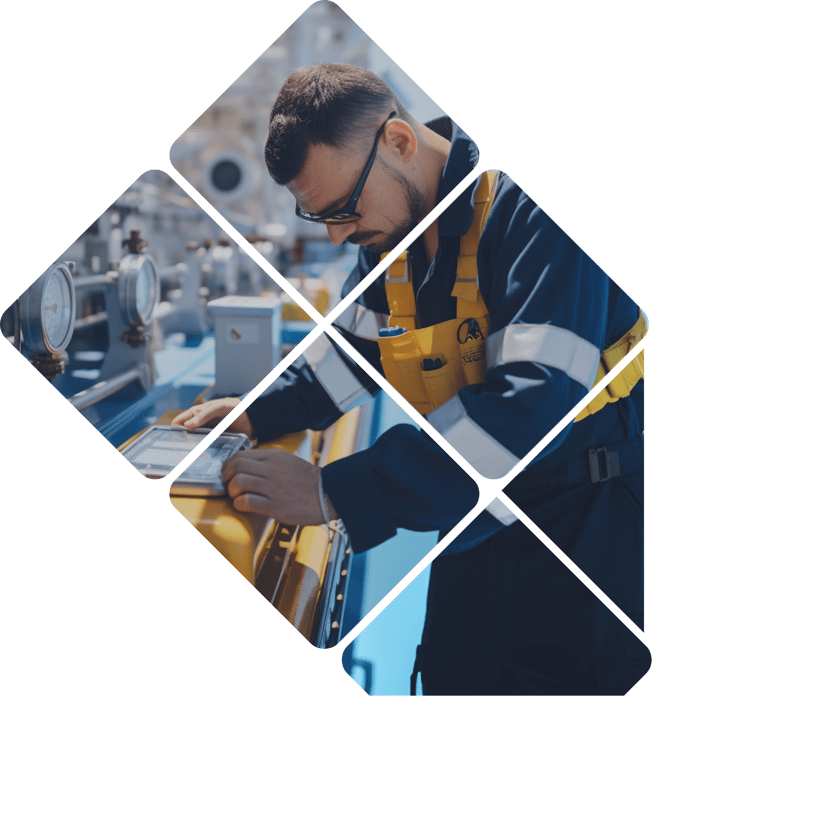IMO reinforces enclosed space entry standards
The most important shift is clear: atmospheric testing must go beyond oxygen.

Logistics is the key cost driver in gas detection. This is how you reduce its impact on your bottom line.
All ships are required to test and calibrate gas detection equipment at regular intervals. As with any health and safety equipment, precision and reliability is critical.
In keeping with this, ships need new supplies of the following consumables (at least) once per year:

But where do you send it?
In simplified terms, costs related to gas detection is a function of the number of products and deliveries. The key is to keep both categories at a minimum.
With the conventional approach to gas detection, crews cannot perform service and calibration on board. Instead, the equipment has to be sent to shore for an annual check-up (and oftentimes more frequently).
And here is the second drawback: Ships are required to keep gas detection equipment on board at all times, meaning they are not permitted to send all their units at once. This means they have to carry and maintain a surplus amount of equipment – often more than double the amount required by regulations.
And there is more: Ships are required to perform maintenance on all gas detection equipment. Once the first set of equipment is returned to the ship from the onshore service, the duplicate set of units has to undergo the same procedure.
In summary, the conventional approach requires a ship to:
Calibration gases are classified as “Dangerous Goods”. You cannot just send a container of pressurised Methane on a commercial airliner. Here are some of the costs associated with calibration gas logistics:

Considering how the dangerous goods fees alone can amount to hundreds of dollars for an individual delivery, it is no wonder careful logistics planning is crucial.
In fact, with the right approach, you can leapfrog most of the cost drivers above.
We have spent 20 years developing and fine-tuning a system that helps you avoid all the costly pitfalls. How?
1) We pinpoint exactly what gas detection equipment you need.
This process alone reduces the number of gas detectors on board by 30 – 70 percent. And because you are required to service all gas detection equipment on board, the service costs drop accordingly.
2) Our system allows you to perform service and calibration on board.
There is no need to send your equipment to shore. That means you only need a single set of gas detection equipment.
3) We plan and keep track for you.
Our support team monitors your consumption of gas and makes sure that you are supplied with what you need along your route. We coordinate deliveries with scheduled dockings, even on short notices.
Put simply: We replenish your ship at the lowest possible cost.
4) Local presence. We keep stock of supplies in a network of global hubs.
This ensures quick and efficient deliveries, with minimum fees. Most of the dangerous goods are available close by, so you avoid long-distance shipments and associated fees.
Read more: Gas detection at sea: The Bruusgaard System explained
You probably wonder how all of the above manifests itself financially. No two fleets are the same, but our clients commonly see cost reductions of around 50 percent.
The illustration below* outlines the cost scenarios of both the conventional approach and The Bruusgaard System.
 *For illustration purposes only. Total cost reduction depends on individual conditions.
*For illustration purposes only. Total cost reduction depends on individual conditions.
There are two reasons for this:
1) Standardisation reduces the amount of equipment, and hence the number of deliveries and service assignments.
2) Our logistics model, with our extensive network of hubs, allows for local deliveries – as opposed to transnational or even transcontinental ones. This eliminates the majority of fees associated with the conventional approach.
Thank you for reading, and do not hesitate to get in touch if you would like to transition into a safer and more cost-efficient gas detection system solution.
Read more: Maritime gas detection: key cost drivers

Post by Martin Bruusgaard
Similar subjects
Never miss out on industry news, reviews and articles.
The most important shift is clear: atmospheric testing must go beyond oxygen.
Extending equipment lifetime works well, provided the support system still does.
For years, logistics was about coordination. Timing. Planning. A system that, while...
Optimal safety. Minimal effort.

Providing solutions for




